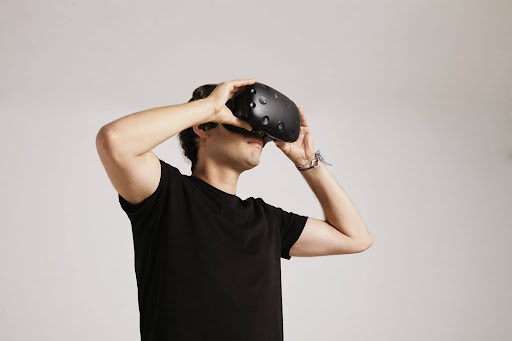Extended Reality Technology
Latest Articles
February 7, 2024
Immersive experiences are partly shaped by the hardware components of extended reality (XR). The XR headset and smart glasses are at the core of comprehensive reality, providing users with access to virtual environments and digital content. For a deeper understanding of the applications of VR, AR, and MR headsets, it is crucial to make distinctions between them.
XR Headsets: Bridging Worlds with Immersive Experiences
XR headsets represent the heart of extended reality by providing users with access to virtual worlds. The content appropriately differentiates VR headsets, like the Oculus Rift or HTC Vive, from AR headsets, like the Microsoft HoloLens. VR headsets enclose the user’s face to provide a fully immersive experience, but AR headsets overlay digital content onto the real-world view to ensure that the user is aware of their surroundings.
With their discreet appearance, smart glasses have emerged as another crucial component of the XR ecosystem. Smartglasses, such as Google Glass and Nreal Light, are equipped with sensors, cameras, and displays that enable users to access AR applications wherever they are. With their compact form factor and connectivity to phones or dedicated processing units, smart glasses make augmented reality more accessible.
As technology advances, XR applications will be able to benefit from ongoing innovation in hardware components. Content will become increasingly immersive and interactive with the continuous evolution of XR headsets and smart glasses.
Challenges and Limitations: Navigating the XR Terrain

The promise of extended reality is vast, but challenges and limitations also accompany it. Regulations struggle to keep pace with rapid advancements as a result of legal concerns surrounding XR innovation. XR technologies are being used ethically without clear-cut regulations, and comprehensive guidelines are needed.
Hardware limitations may hinder widespread adoption, particularly the high cost of XR headsets. Portable devices’ battery life may also be affected by the significant computational power required by the hardware, affecting user convenience. As XR technologies collect and store sensitive user data, robust security measures are needed to prevent breaches and unauthorised access.
The potential discomfort, nausea, and physical injuries associated with prolonged headset use are brought to the forefront. Addressing disorientation and the risk of colliding with real-world objects is crucial for widely accepting XR technologies.
Barriers to adoption in several industries, including HR and training, are acknowledged. Integrating XR technologies into existing workflows is time-consuming and challenging, emphasising the need for strategic planning and seamless integration.
Finally, it is acknowledged that XR technologies are subject to skepticism and resistance. A critical factor in ensuring the rapid adoption of XR technologies is overcoming doubts about their value and effectiveness compared to traditional methods.
Opportunities and Advantages: XR’s Transformative Impact
Extending reality offers myriad opportunities and advantages that are aptly addressed in the content. The ability of XR to create immersive and interactive experiences is recognised as a critical advantage for learning, training, and entertainment. Users can better understand their surroundings through simulated environments, interactive digital objects, and new perspectives.
With virtual simulations and prototyping, XR can improve efficiency and reduce healthcare, architecture, and manufacturing costs. XR experiences enable new avenues for enhancing a variety of industries due to their collaborative and personalised nature.
Future Trends: Navigating the XR Landscape
A forward-looking perspective on future trends shaping XR is presented at the end of the content. Several key trends are identified, including
- As a result of a prediction that during this decade, 25% of people will spend at least one hour a day in a metaverse, there is an increased investment and interest in XR within this industry. In its capacity as one of the enabler technologies of the metaverse, XR is poised for a heightened adoption rate in the future.
- Rising Deskless Workforce: With 80% of the global workforce being deskless, AR emerges as a solution to increase efficiency for workers in retail, healthcare, manufacturing, and construction. As a result of meeting the needs of deskless workers, the adoption and integration of XR technologies can be significantly impacted.
- Consumer Adoption of AR: While Snapchat’s global AR report predicts 75% of the worldwide population being frequent AR users by 2025, a more cautious expectation of AR adoption is presented. Undeniably, however, augmented reality is essential in enabling XR, opening up new possibilities for engagement across all demographics.
To navigate the impending digital transformation, businesses and consumers alike are encouraged to become early adopters of this new technology, which is expected to impact both profoundly. XR is a rapidly evolving technology, and to realise the transformative impact of extended reality, it is essential to embrace its potential while addressing its challenges as it continues to grow. Undoubtedly, the convergence of opportunities, challenges, and future trends paints a comprehensive picture of the XR landscape, which is why stakeholders are encouraged to plan for the future.
As we anticipate the new century of technology, Extended Reality (XR) is poised to be at the forefront of transformative technological shifts, reshaping how we interact with the digital and physical worlds. The introduction of XR headsets and smart glasses, exemplified by advances in VR and AR technologies such as Oculus Rift, HTC Vive, Microsoft HoloLens, and Nreal Light, is pivotal in delivering increasingly immersive experiences.
However, this industry’s promising landscape is not without its challenges. A robust regulatory framework must address legal, privacy, and security concerns. As a result of high costs and computational requirements, XR adoption is not widely adopted, and skepticism about its integration across various industries also poses a challenge.
Yet, 2023 paints a picture of a landscape where XR’s potential for immersive learning, training, and personalised experiences is increasingly apparent, with trends like the emergence of the metaverse, the rise of the deskless workforce, and the growing adoption of augmented reality shaping the trajectory. The ability to navigate this dynamic landscape by becoming an early adopter is crucial to transforming how businesses and consumers do business in the future, thanks to the benefits XR can offer.







